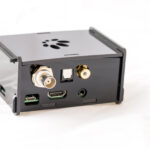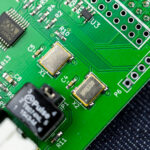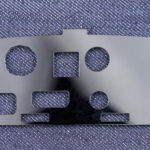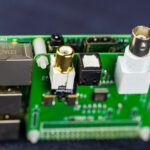 In part 1 of this review, I discussed the various merits and challenges of USB, optical SPDIF and RCA SPDIF for audio transmission. By the end of the review, I’d decided that a Raspberry Pi working as a networked Roon endpoint was a highly effective alternative to expensive SPDIF bridges to convert USB audio to SPDIF or BNC. However, I wondered if my Raspberry Pi setup was still held back by the RCA SPDIF connection so I upgraded to the newly released Hifiberry Digi+ Pro module to have better signal handling and, more importantly, a BNC connection. You won’t believe what happened next…
In part 1 of this review, I discussed the various merits and challenges of USB, optical SPDIF and RCA SPDIF for audio transmission. By the end of the review, I’d decided that a Raspberry Pi working as a networked Roon endpoint was a highly effective alternative to expensive SPDIF bridges to convert USB audio to SPDIF or BNC. However, I wondered if my Raspberry Pi setup was still held back by the RCA SPDIF connection so I upgraded to the newly released Hifiberry Digi+ Pro module to have better signal handling and, more importantly, a BNC connection. You won’t believe what happened next…
Just kidding, I’m not into click bait, but the results were excellent!
Introducing the Digi+ Pro from Hifiberry
 Hifiberry make a number of specialist audio modules for Raspberry Pis including DAC modules, amp modules and the Digi+ digital output modules. They’ve recently added pro grade versions of some modules as beta products. The pro models provide higher grade components and connectors as well as more customisation options (in the case of the Digi+ Pro at least).
Hifiberry make a number of specialist audio modules for Raspberry Pis including DAC modules, amp modules and the Digi+ digital output modules. They’ve recently added pro grade versions of some modules as beta products. The pro models provide higher grade components and connectors as well as more customisation options (in the case of the Digi+ Pro at least).
The Digi+ Pro provides the following improvements:
- gold plated RCA SPDIF connector
- separate clocks for 44.1kHz and 48kHz based signals
- PCB space for BNC and I2S connections
 To capitalise on the BNC connection, I had to source* and solder my own connector, but that proved fairly straight forward. Slightly more challenging was cutting a clean and tidy hole in the acrylic case for the RPi / Digi+ combo, but it was still very manageable and minor irregularities in the hole are hidden by the BNC socket itself.
To capitalise on the BNC connection, I had to source* and solder my own connector, but that proved fairly straight forward. Slightly more challenging was cutting a clean and tidy hole in the acrylic case for the RPi / Digi+ combo, but it was still very manageable and minor irregularities in the hole are hidden by the BNC socket itself.
*Hifiberry will be applying BNC connectors in future, but users will still need to do their own soldering.
Even if you’re not into soldering and modifying your own gear, I can confirm that the Pro version of the Digi+ does provide better sound than the regular Digi+ when using optical or RCA SPDIF connections, but that’s secondary to the purpose of this review – I was on a quest for all-out audio performance on the tightest budget I could impose. The question was “How little can I spend and still achieve outstanding sound?”
Is BNC Really Better?
In part 1, I explained the issues of impedance when using RCA SPDIF. Based on my experience and research, finding an RCA SPDIF circuit (i.e. source through DAC) that maintains 75 ohms at each component (including sockets, plugs and cables) is as good as impossible (it may actually be 100% impossible). BNC provides a standard where the impedance can be maintained throughout the circuit.
Just to recap, the importance of impedance matching is this:
Every time the signal hits a new impedance there is a minor reflection created. This reflection messes up the purity of the signals following it and results in noise or jitter in the signal. Therefore, by maintaining constant impedance the signal should be cleaner and the resulting music should be smoother and more detailed…
 After soldering the BNC connector to the Digi+ Pro I was able to connect the Raspberry Pi to the Gumby (DAC) via both RCA SPDIF and BNC simultaneously which meant I could switch rapidly for A/B comparisons. The results were obvious.
After soldering the BNC connector to the Digi+ Pro I was able to connect the Raspberry Pi to the Gumby (DAC) via both RCA SPDIF and BNC simultaneously which meant I could switch rapidly for A/B comparisons. The results were obvious.
The BNC signal was clearly superior. Thanks to the reduced jitter, the sound from the BNC connection was smoother, but more importantly it had a greater sense of space and depth combined with stronger and tighter bass reproduction. I believe everything I heard was just the result of less noise, but the difference wasn’t as subtle as that might sound. Switching to BNC had the effect of stretching the back of the soundstage away from me. The closest sounds stayed close, but the overall depth of the soundstage increased. Likewise, the remaining hint of haze and distortion was removed from the overall signal making it buttery smooth while revealing every detail. Finally, the complete lack of distortion (often perceived as higher frequency sounds) allowed more of the bass to shine through. The bass didn’t become louder at all, it just gained a greater sense of presence in the overall sound.
Conclusion & recommendations
If you’ve reached this point somewhat confused, I competently understand. Let me pull it all together…
- A good SPDIF signal is often superior to a good USB signal, but you can’t rely on this 100% due to variations in DAC circuitry and variations caused by source design and cable selection
- If you have the money to spend on a bridge device to convert USB to SPDIF (or ideally BNC) it’s probably a simpler solution
- If you’re happy to tinker a bit and use streaming software like Roon or setup a Raspberry Pi music player, you can achieve outstanding digital audio quality on a very low budget
Here’s the breakdown of approximate costs:
- Raspberry Pi – $45
- Digi+ Pro – $45
- Case (optional) – $10 and up
- Power supply – $12
- BNC socket – $8
 As you can see, at around $150 (USD) all up, this is a much cheaper solution than a top quality SPDIF bridge and it provides BNC which is not necessarily true for a lot of the bridges out there. Not only that, but the RPi can be reconfigured at any time to act as a standalone media player or network end point for streaming music – it’s extremely versatile and compact. There are also options to add linear power supplies for the Digi+ Pro board and all kinds of other tweaks I haven’t even begun to consider.
As you can see, at around $150 (USD) all up, this is a much cheaper solution than a top quality SPDIF bridge and it provides BNC which is not necessarily true for a lot of the bridges out there. Not only that, but the RPi can be reconfigured at any time to act as a standalone media player or network end point for streaming music – it’s extremely versatile and compact. There are also options to add linear power supplies for the Digi+ Pro board and all kinds of other tweaks I haven’t even begun to consider.
I can certainly recommend this setup if you’re looking for an affordable, incremental upgrade to your existing USB setup.







